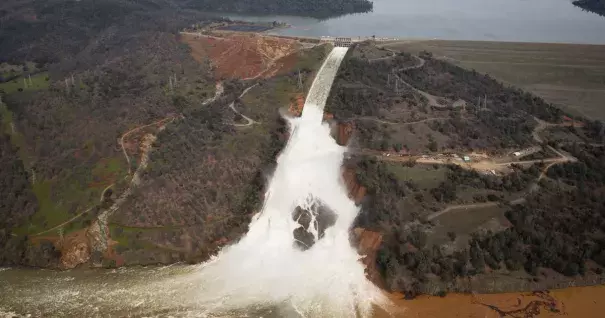California’s Drought May Be Over, But Its Water Troubles Aren’t

As of last week, according to the National Drought Mitigation Center, more than three-quarters of the state is out of the drought, with barely one per cent falling into the “severe” category—almost the reverse of the situation at this time last year. Already in 2017, many parts of California have received more than twice their average annual precipitation. The numbers would seem to paint a picture of watery salvation. But Peter Gleick, the chief scientist at the Oakland-based Pacific Institute, told me that one year of heavy precipitation, even a record-breaking one, will not undo the most serious repercussion of the drought: a severe deficit of groundwater. For years, Central Valley farmers have drawn liberally from the region’s aquifers to compensate for reduced supplies from canals and aqueducts. When a large enough volume of groundwater is pumped away, the land can slump like a punctured air mattress. Areas along the valley’s western edge have sunk by nearly thirty feet since the nineteen-twenties, and in some places the local infrastructure—roads, bridges, even the California Aqueduct itself—is at risk. Farmers and municipalities have responded by digging deeper wells, but such measures seem to be prolonging the inevitable. In Tulare County, south of Fresno, where groundwater overdraft has been particularly severe, the number of reported well failures has continued to climb, almost quadrupling since 2014, in spite of last year’s above-average precipitation and this year’s deluge.
Climate change is a significant contributor to the problem. As the Stanford climatologist Noah Diffenbaugh noted in 2015, California’s reservoirs, aqueducts, and canals are vestiges of a cooler, less drought-prone past. The state’s model of water storage is snowpack-dependent, meaning that it works properly only when the bulk of the water in the system is locked up in mountain snow. These days, though, more precipitation falls as rain than as snow, placing stress on the reservoirs. And even though this year has seen record snowpack—a hundred and eighty-five per cent of the average, as of March 1st—California has also experienced dozens of so-called rain-on-snow events, which further hasten the melting. Meanwhile, warmer temperatures are projected to shift the snow line to higher altitudes, dramatically shrinking the over-all size of the state’s snow reservoir. At current rates of warming, the Sierra Nevada could lose a quarter of its snowpack by the middle of the century, according to the California Department of Water Resources.
Sudden swings between drought and flood have been part of California’s climatic history for a long time, Diffenbaugh told me, but those swings now stand to become more extreme. “This is exactly what climate scientists have predicted for at least the last thirty years,” he said. The solution, Gleick said, is to prioritize the aquifers—and quickly, because severe land subsidence can permanently eliminate storage space. “Unless a massive effort is made to both reduce overdraft and to artificially enhance recharge rates, California’s groundwater will continue to decline,” he wrote in an e-mail. Not only are there fewer regulatory hurdles involved in underground water-banking than, say, permitting a new reservoir or desalination plant, but the costs of groundwater storage are far lower than these other options, scientists at Stanford’s Bill Lane Center for the American West recently found.


